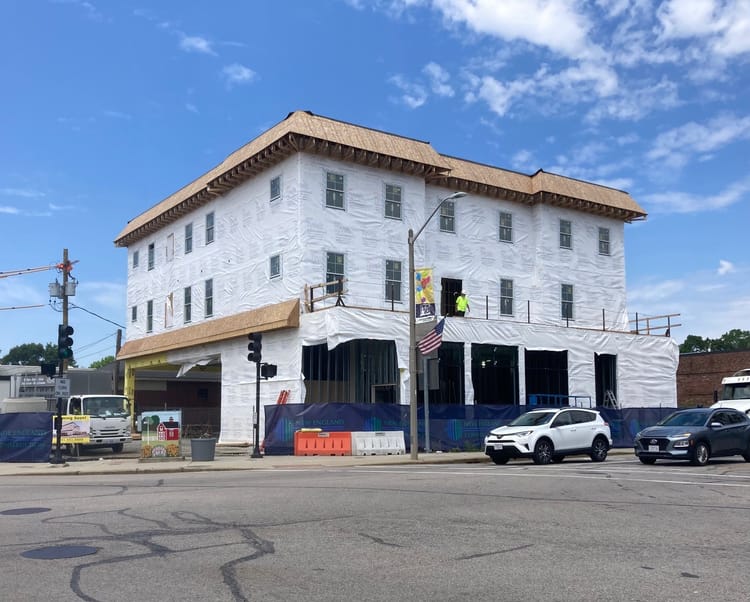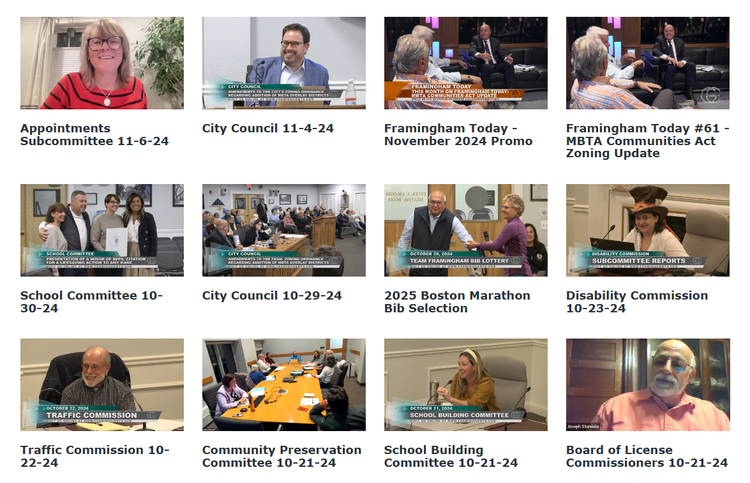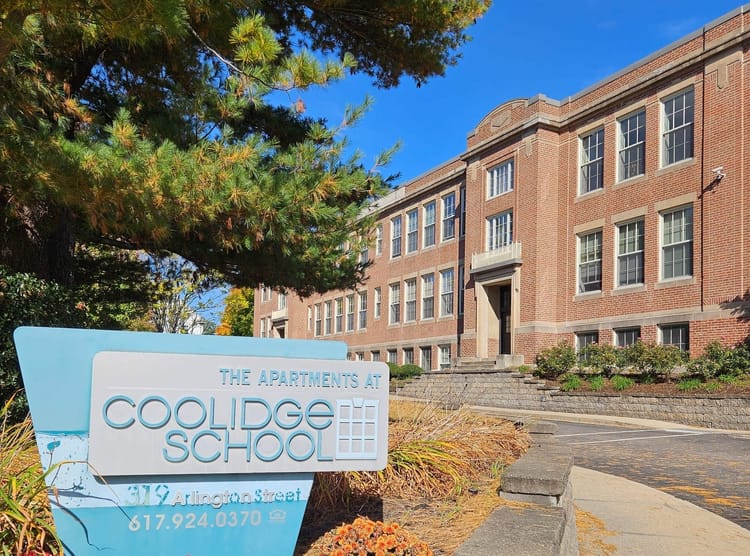Despite challenges, dozens of compliance plans are passing at spring town meetings
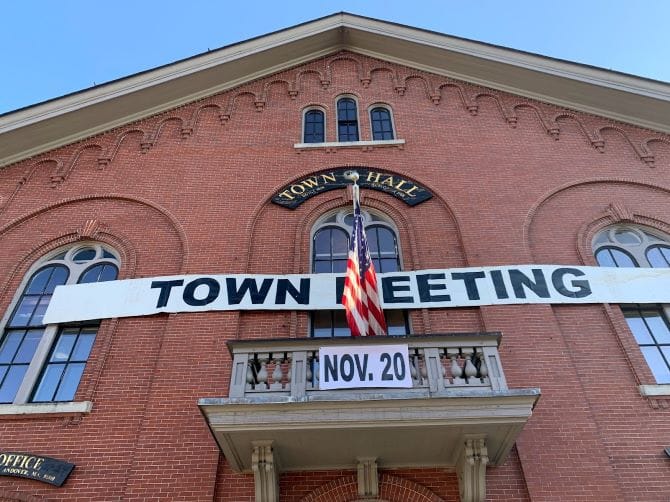
Upzone Update offers analysis of MBTA-C compliance efforts, produced by zoning expert Amy Dain and the staff of Boston Indicators. This week's article is by Amy Dain.
The level of rezoning happening right now under the MBTA Communities zoning law for multi-family housing to be allowed as-of-right is entirely unprecedented. To be clear, it still is not enough to solve the housing crisis. But zoning reform is hard, and some real success is now underway after decades of advocacy. The progress is worth celebrating while we keep working for more reform. Good job, housing leaders!
The list of municipalities that have so far reformed their zoning to comply and/or submitted their zoning for state determination of compliance include: Abington, Andover, Arlington, Bedford, Braintree, Bridgewater, Brookline, Cambridge, Chelsea, Concord, Danvers, Dedham, Essex, Everett, Franklin, Grafton, Harvard, Haverhill, Hingham, Lakeville, Lexington, Lincoln, Lowell, Malden, Mansfield, Medford, Newbury, Newton, Northborough, Northbridge, Norwood, Pembroke, Plymouth, Quincy, Revere, Rockport, Salem, Scituate, Somerville, Stoneham, Taunton, Wareham, Wellesley, Westborough, Westford, Winchester, and Weymouth. (Franklin and Mansfield have taken a phased approach, where they’ve completed first steps.)
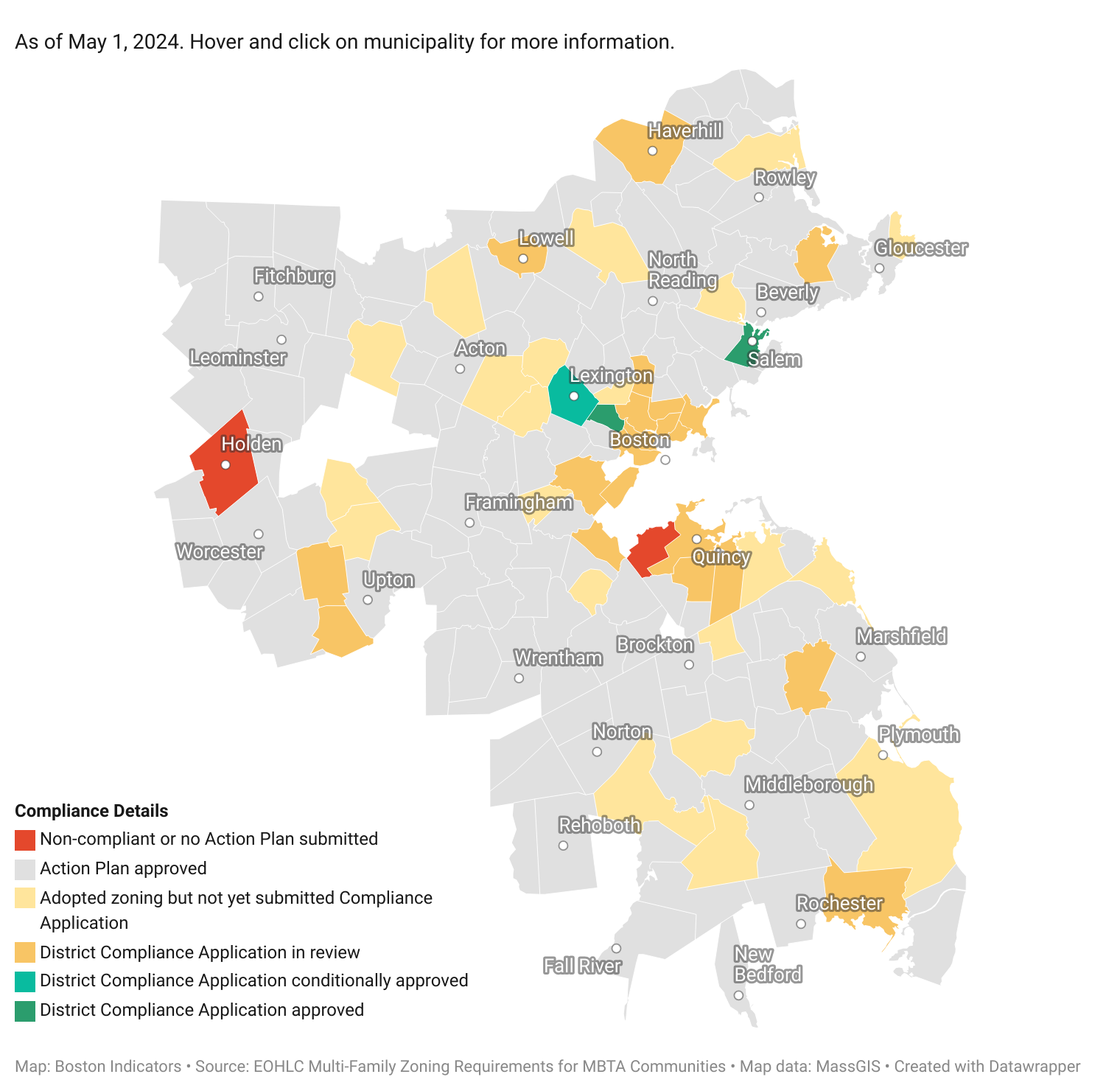
This means that in the last year alone, well over 40 municipalities have already zoned for multi-family housing to be allowed as-of-right – as a result of the MBTA Communities zoning law. Implementation is in progress. Next week, 15 town meetings are scheduled to vote on zoning reform. In the next year and a half, many more will.
For decades, coalitions of housing advocates, state officials, think tank leaders, and regional planners pushed for Massachusetts cities and towns to zone as-of-right multi-family housing districts near train stations and Main Streets. As-of-right means permit decisions are based on knowable rules without extra hearings and discretionary votes on individual projects. Despite waves of state-funded planning support for such rezoning, very few as-of-right multi-family districts (covering multiple properties) were adopted. Even state financial incentives for rezoning failed to deliver change.
In the moments when zoning reform does happen successfully, there are no new houses or places to celebrate: just new dimensional standards, use definitions, review processes, regulatory minutiae. It isn’t material for gripping reporting. Yet, in the context of zoning history, the level of zoning reform taking place right now is almost unimaginable.
Conflict and defiance make for more engaging headlines, so the media has spotlighted local opposition more than the epic progress. The Milton case is indeed fascinating, with involvement of the attorney general and SJC. Marshfield and Wakefield have also garnered press recently for voting down proposals for new as-of-right multi-family zoning. A group of Rockport residents is suing the town over its new zoning. The bigger takeaway, though, is that state leadership in housing policy has made it possible for numerous municipalities to zone for diverse housing – critically needed housing.
It is early to project how much housing might result, as the rezoning efforts are still underway. Preliminary analyses, though, indicate that full implementation of the law would only be a partial solution to the housing shortage; additional policies are certainly needed. Progress under MBTA Communities needs to be part of a larger package.
Remind me, what is Zoning Unit Capacity?
In local debates about MBTA Communities zoning, confusion remains about what the performance metric called “unit capacity” requires of municipalities.
The law’s implementation guidelines assign each municipality a unit capacity, set as a certain percent of the existing number of residences in a municipality. The number is a minimum threshold used by the state to assess if a district is of a “reasonable size,” in compliance with the state law.
The unit capacity provides a rough count of housing units allowed by the zoning rules in a zoning district, regardless of how many houses are already there, how many new houses could be built (in addition to existing ones), and what the market is likely to yield.
One mistake in understanding: Some people have been explaining that unit capacity represents the number of housing units that a municipality must allow above and beyond the housing that already exists in the district. It is not that. Indeed, in certain areas already built up with multi-family housing, a district could technically comply with the law without allowing any “zoning capacity” for additional residential construction, but instead just “allowing” what has already been built.
Ideally, many municipalities would zone for more capacity than the minimum required by the state, which was set at levels to be politically feasible, not at levels to solve the housing crisis. But opponents of local rezoning have been using the unit capacity number to exaggerate the potential for new units and undermine the political feasibility. MBTA Communities is one incremental step; the state now needs to take more steps, for example allowing accessory dwelling units (ADUs) statewide as-of-right, among other things.
Give Boston some love
Boston is not part of the MBTA Communities zoning law, because the state’s Chapter 40A Zoning Act does not cover Boston. But Boston is at the thrumming heart of the region, and of the MBTA network; rezoning for more housing in Boston matters too! Check out this excellent analysis, including growth projections and interactive maps, done by Abundant Housing Massachusetts about Boston’s Squares + Streets rezoning effort in Roslindale & Cleary Squares.
Nevin Lorden of Dorchester Growing Together supports Squares + Streets and details why in this explainer in the Dorchester Reporter.
In local news, there has been a lot of activity
Concord Town Meeting approved five sub-districts in Concord Center and West Concord, to come into compliance with MBTA Communities.
Bridgewater Town Council voted 7-1 in favor of MBTA Communities zoning. The town adopted a form-based code for part of the central business district.
Lynnfield has set up a working group to consider options for MBTA Communities zoning.
After Rockport approved zoning to comply with MBTA Communities, a group of residents there filed a lawsuit against the town, the Boston Globe reported.
The Marblehead Current provides an analysis of the zoning proposal in Marblehead, explaining “the board decided to zone for roughly 58 acres rather than the minimum required because spreading future housing development over a wider area would create a less noticeable impact and allow development to blend more easily into the existing neighborhoods.” In a Letter to the Editor, Mimi Hollister Gardner and Bonnie Grenier write, on behalf of the League of Women Voters of Marblehead, “Instead of resenting being ‘told what to do,’ we should be grateful to live in a state that is addressing real issues that real people face in ways that ease into solutions and invite towns to take on their share in a very moderate way that enhances life for all of us.”
This article in Patch explains that Wayland's "proposed overlay districts include areas that already have multifamily buildings, including the River's Edge development and the Town Center area. All of the overlays are along or close to the Boston Post Road.” The public forum recording is here. Another Patch article offers more detail on the districts: “Two of the proposed sub-districts are where multifamily zoning is already in place: the non-age-restricted portion of Alta Oxbow and a small portion of Mainstone (Coltsway). The other two sub-districts are within commercial zones where owner support is significant and disruption to existing neighborhoods is limited: Rte. 20 West on the Sudbury town line and Town Center (which already has residential development).”
The Natick Report offered this primer on Spring Town Meeting, which started in April and continues on Tuesdays and Thursdays until all of the business is handled, including MBTA Communities zoning.
Newbury just passed MBTA Communities zoning.
Whitman is preparing a proposal on MBTA Communities for Town Meeting, but it might be delayed for an October vote, to have time to gain pre-approval of the proposal from the state.
Grace Furguson of New Bedford Light wrote an in-depth investigation of MBTA Communities zoning in New Bedford. City Council will consider the proposal later in the year. Among the issues to be considered are parking minimums. The proposal might come in separate parts, to be voted on across multiple meetings.
A Marshfield voter frustrated with the MBTA Communities requirements said, "I don't like the state strong-arming us, because I just feel like it's the mafia going into the liquor store. I don't like that at all." Marshfield voted down the proposal.
Northborough voters approved MBTA Communities zoning. Northborough’s bylaw includes a requirement that 15% of all of the units in a development with a minimum of 10 units must be affordable for low-income households. This article explains: “The first subdistrict is called the Southwest Connector Sub-District. It would be 49.2 acres and include three parcels — Avalon Northborough; an undeveloped, abutting parcel of land that has access off Route 20; and the Econo Lodge. The second subdistrict is called the Downtown Sub-District. The district was originally proposed to contain 11.9 acres and encompass Town Hall, Matec Instruments, Heritage Village, the property at 22-24-26 Hudson Street and five acres of EL Harvey and Sons.”
And in state-level reporting...
Tom Hopper and Ellen Marya at the Massachusetts Housing Partnership share four key insights in Banker & Tradesman. First, numerous municipalities are working proactively toward compliance, and some have already achieved it. Second, zoning sets the rules about where and how much housing is allowed, but zoning does not do the building or make the places. Zoning unlocks the door to let people use other tools for building and placemaking. Other tools include affordable housing subsidies, pedestrian and cycling investments, and infrastructure funding, among other things. Third, MBTA Communities has begun the recalibration of state, regional, and local roles in land use planning and regulation. State leadership is playing a bigger role now. Finally, a next step is to invest time and resources on the MBTA Communities districts. The goal is not the zoning, but a more functional region, with greater opportunities and quality of life for all residents.
Andrew Brinker at the Boston Globe wrote a short handbook – what you need to know – about the MBTA Communities zoning law.
The Boston Globe ran this feature on Adam Chapdelaine, head of the Massachusetts Municipal Association, which has a long history of opposing state efforts to reform local zoning. The article quotes Marc Draisen, head of MAPC: “I don’t know if their position is going to change or become more nuanced. But Adam works as a consensus builder. If someone can move the MMA forward, it’s him.”
Susan Gittelman writes in Banker & Tradesman that “we must embrace a bolder housing vision and build political support to enable the commonwealth to use its powers to seed the housing we need, in every community and at scale.”
CommonWealth Beacon quotes AG Andrea Campbell: “This law allows us to focus on housing as a tool to close the racial wealth gap, to create more inclusive communities, and it is very inclusionary in its intent.”
Upcoming Town Meetings
Annual Town Meeting | Monday, May 6 at 7:00 PM | Acton-Boxborough Regional High School Auditorium and Upper Gymnasium
Annual Spring Town Meeting | Tuesday, May 14 at 7:00 PM | Billerica Town Hall Auditorium
Hanover
Special and Annual Town Meeting | Monday, May 6 at 7:00 PM | Hanover High School Virtual here: https://hanoverctv.org/
Monday, May 6 at 6:30 PM | Auditorium of the Hanson Middle School
Annual Town Meeting | Monday, May 6 | May run for consecutive nights.
Monday, May 6 at 7:00 PM | Hull High School
Annual Town Meeting | Monday, May 6 at 7:00 PM | Veterans Middle School Auditorium
Medfield
Annual Town Meeting | Monday, May 6 at 7:00 PM |Amos Clark Kingsbury Gymnasium
Monday, May 6, at 6:30 PM | Norwell Middle School
Annual Town Meeting | Monday, May 6 at 6:30 PM | Pine Grove School Auditorium
Annual Town Meeting | Monday, May 6 at 7:00 PM | Sharon High School Auditorium, Pond Street.
Monday, May 6, at 7:30 PM | Continuation Dates: Tuesday, May 7; Wednesday, May 8 and Monday, May 13 | L-SRHS Auditorium
Annual Town Meeting | Tuesday, May 7th at 7:00 PM | Masconomet School Auditorium
Spring Town Meeting | Monday May 6 at 7:30 PM | Walpole High School
Monday, May 6 at 6:30 PM | Westwood High School Auditorium

